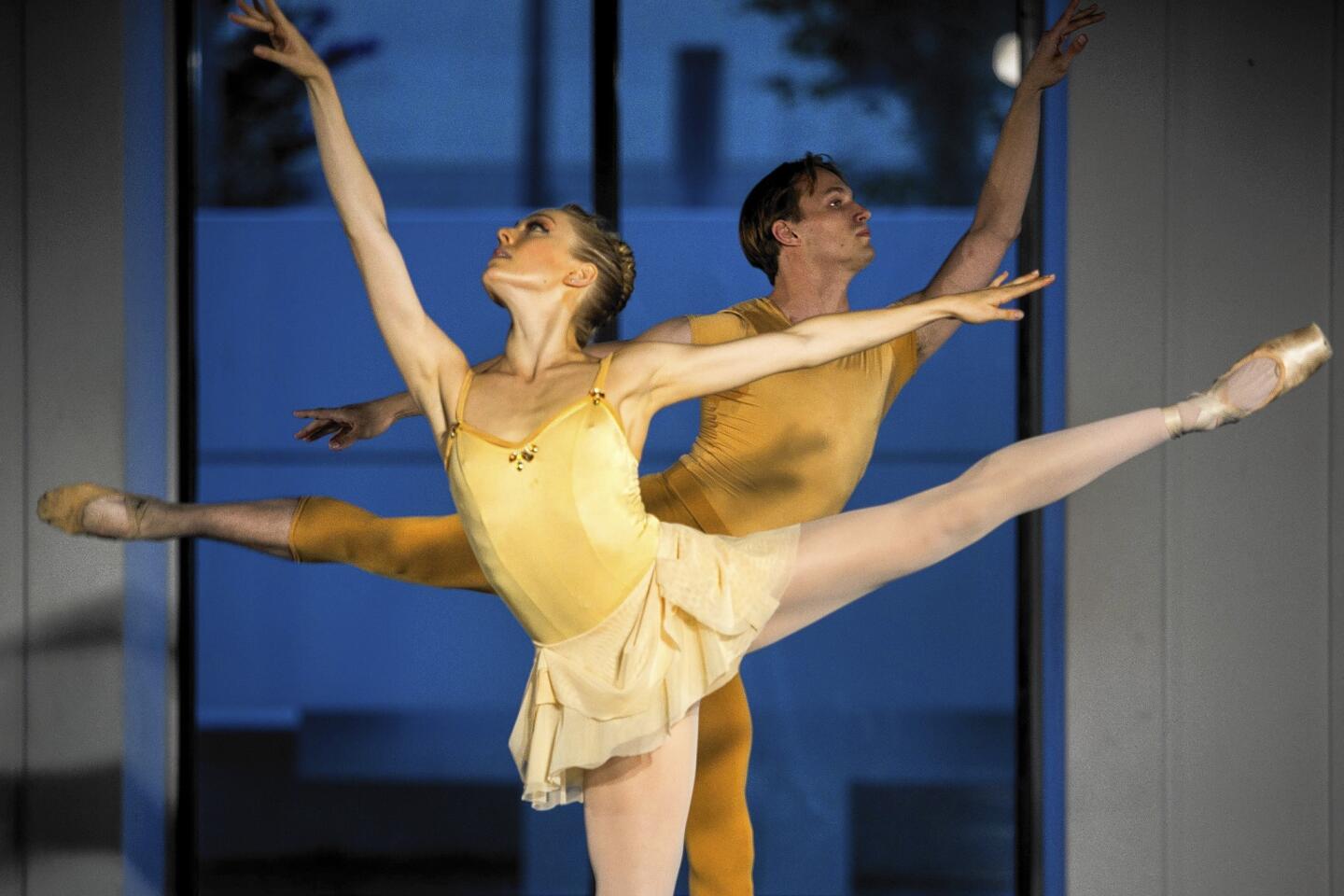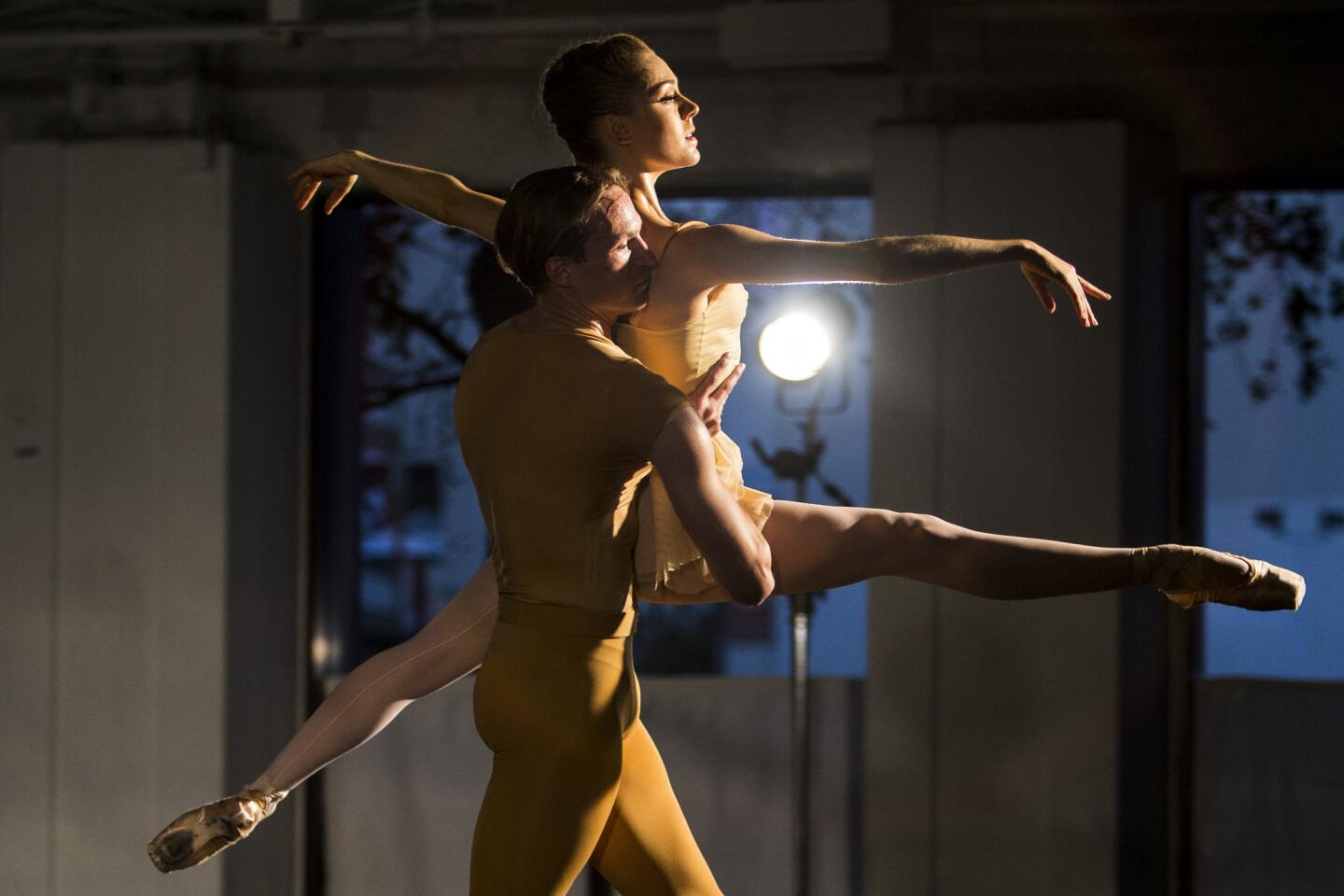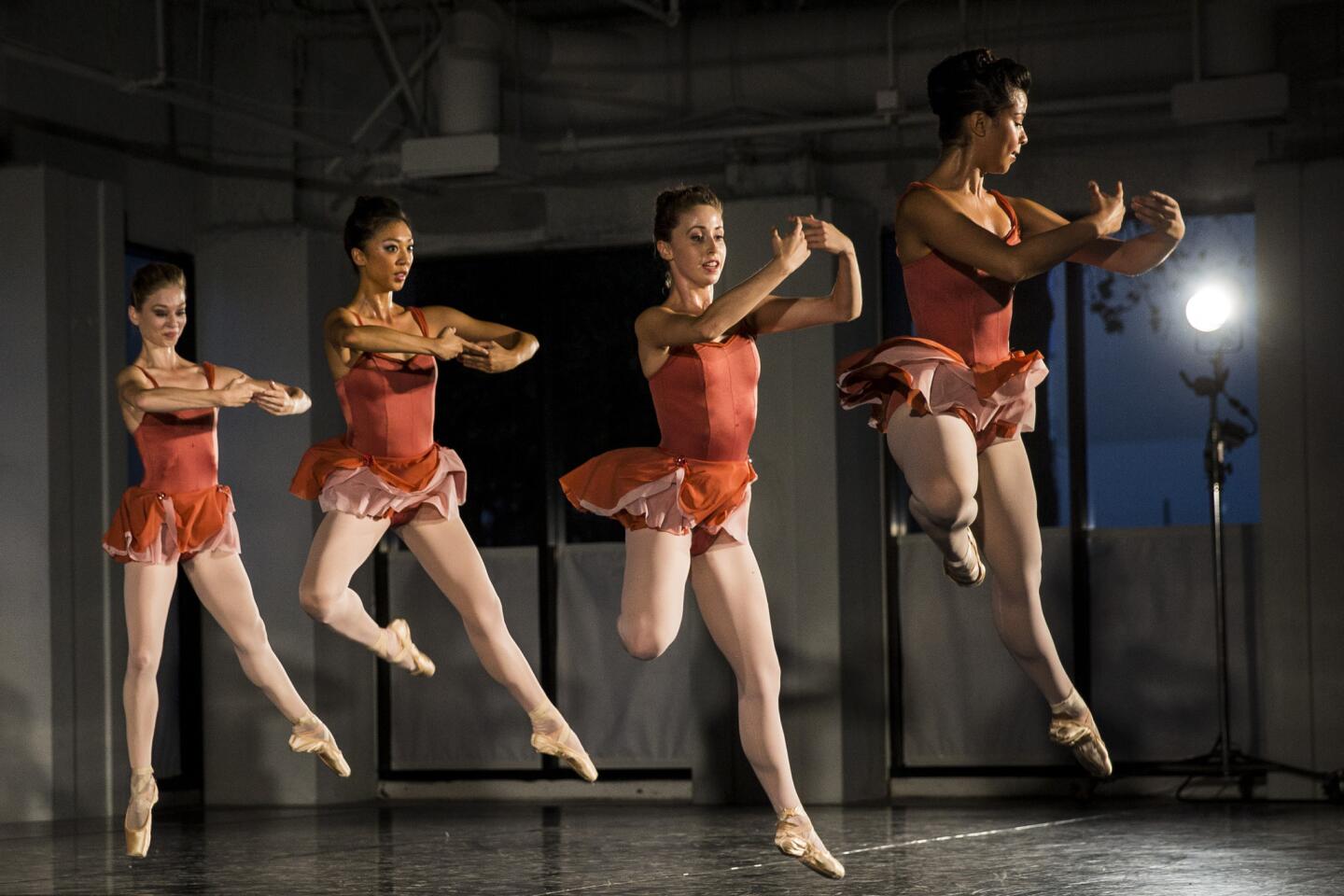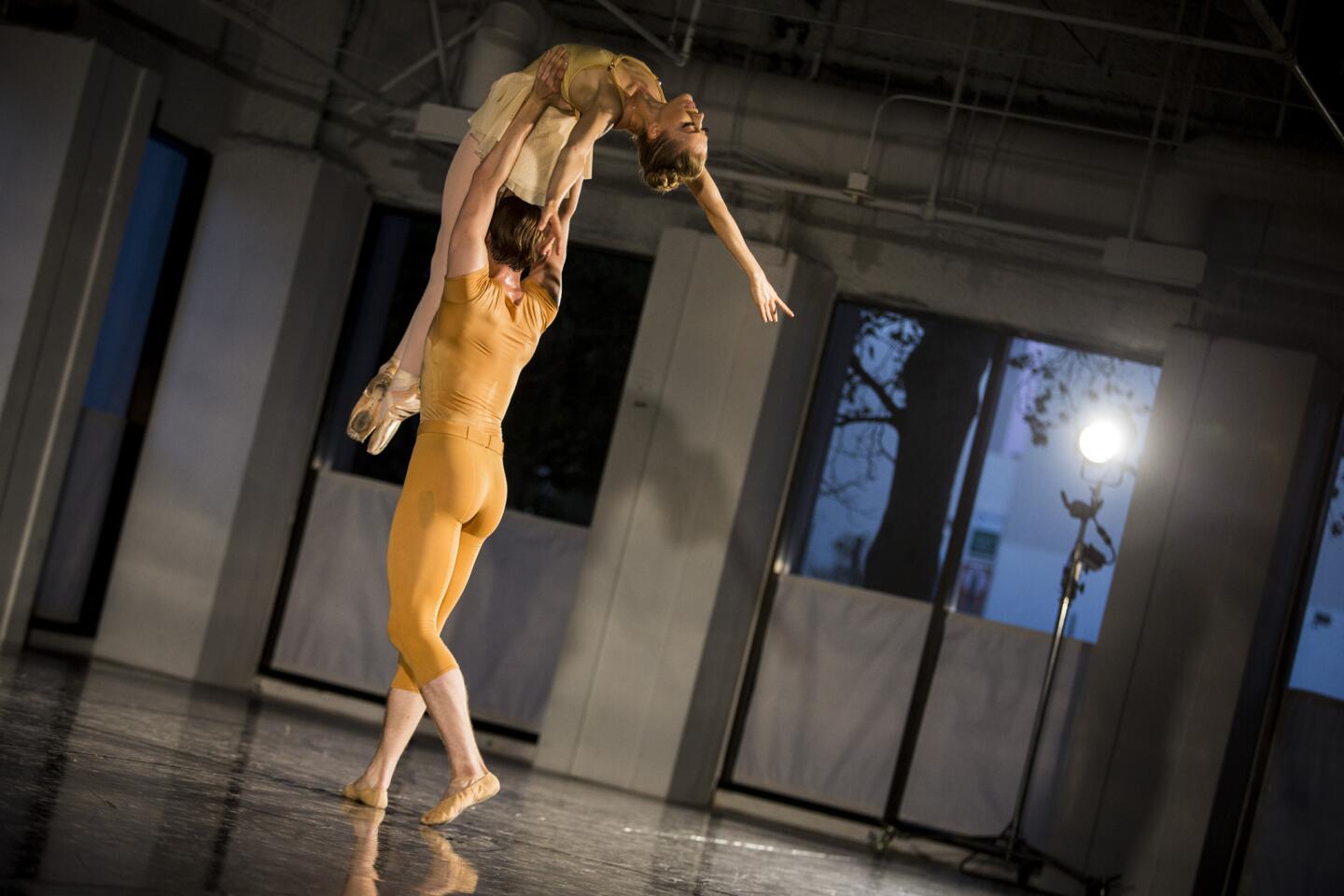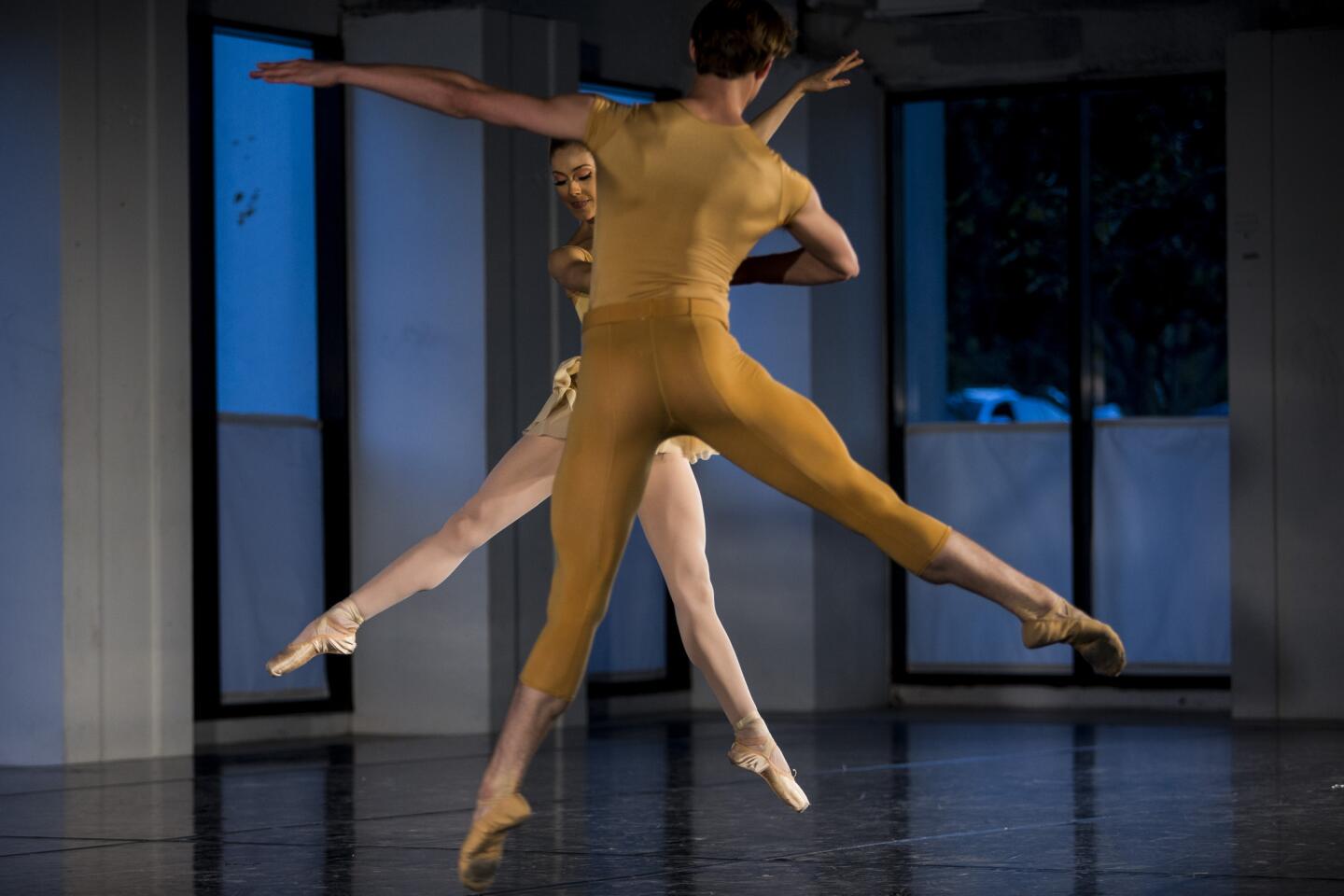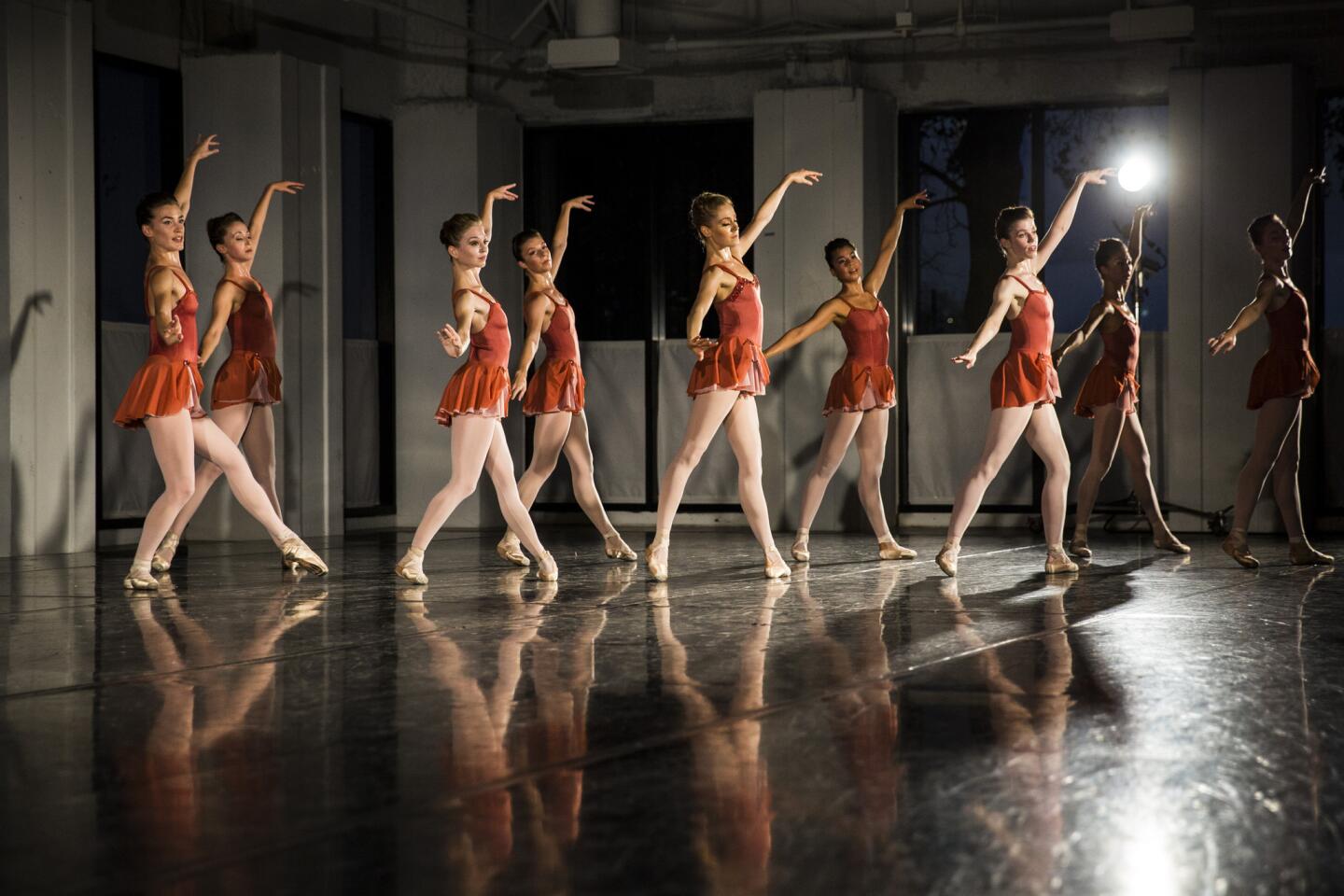In-your-face Tchaikovsky from American Contemporary Ballet
Melancholic. Spirited. Sensual. Tchaikovsky’s Piano Trio in A Minor, Op. 50, a monumental work composed in 1882, runs the emotional gamut. Add a balletic element, and it soars.
It’s the rare choreographer who can physicalize this haunting, enchanting work. Lincoln Jones, artistic director of American Contemporary Ballet, proved up to the task in his first evening-length work.
Closing its third season of Music + Dance: L.A., a partnership with the venerable Da Camera Society, American Contemporary Ballet on Friday presented the first of six shows ending Sunday at ACB DanceSpace on Wilshire Boulevard, accompanied by the superb Saguaro Trio.
In the process, 11 dancers were put through rigorous, gorgeous and occasionally surprising paces.
The Tchaikovsky began with violinist Luanne Homzy, cellist Peter Myers and pianist Régulo Martínez-Antón performing the elegiac 18-minute opening movement, one bursting with lyrical motifs. What followed was a virtual 30-minute theme-and-variations’ marathon, with each of the 10 variations, including a waltz and mazurka, having distinct flavors; the work ending with another variation and coda.
Dressed in gold, the central couple, Alisha Brach and Colby Parsons (she in skirted leotard, he in shiny gold top and calf-length tights), presented the initial slow theme as if statuary, posing, before building steam with quick, articulated footwork. Parsons has hummingbird-like feet, huge elevation and mercurial leaps, and Brach’s porcelain demeanor belies a fierce technique, her back a study in suppleness, her turns precise.
The performance unfolded in a series of entrances and exits in-studio and not on a proscenium stage. This was in-your-face ballet, with every effort seen, every toe shoe squeak and landing heard. Unfortunately, Parsons, having trouble partnering Brach in difficult lifts, appeared to tire early, his discomfort visible. When the eight-woman ensemble entered for the fifth variation — also clad in gold — it was welcomed, as Jones’ line formations and fugal patterns filled the room. Nijinsky-esque, the octet walked slowly, as if nymphs contemplating a romp in the woods.
But one longed for deeper perspective, to view the dance from farther away, to absorb Jones’ intricate neo-Balanchine shapes and diagonals, the ensemble moving in ever-quickening tempos.
Suddenly, a whoosh of black entered, diffusing the golden gals. This was Hungarian-born firebrand Mate Szentes (new to the company this season), who spun, jumped and partnered at times with Rochelle Chang, Cleo Magill, Crystal Serrano and Carrie Ruth Trumbo, before the rest of the ensemble entered, also becoming his playmates. Szentes, impish with a bravura attack, was a disruptive force thoroughly enjoying his Black Swan-like otherness.
Another revelation had the dancers (including Brach and Parsons), returning in coral-colored garb, with Szentes still in black. When the full ensemble, together with Lydia Relle, Lauryn Winterhalder, Anaïs Blake and ACB associate director Theresa Farrell (also Jones’ muse), moved in glorious unison, their delicate bourrées accentuated the ethereal beauty of the art form, however fleeting. With Martínez-Antón’s closing piano notes barely audible, this was a fine end to a daring, mostly sublime, journey.
More to Read
The biggest entertainment stories
Get our big stories about Hollywood, film, television, music, arts, culture and more right in your inbox as soon as they publish.
You may occasionally receive promotional content from the Los Angeles Times.
